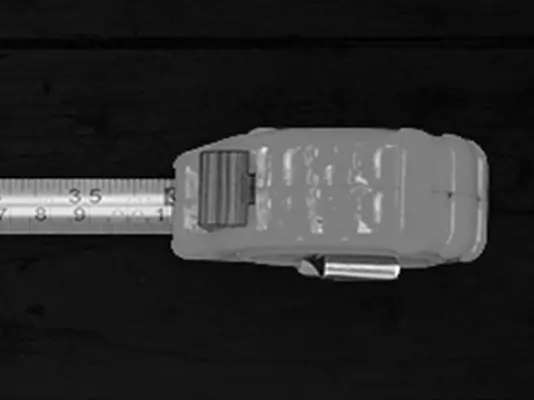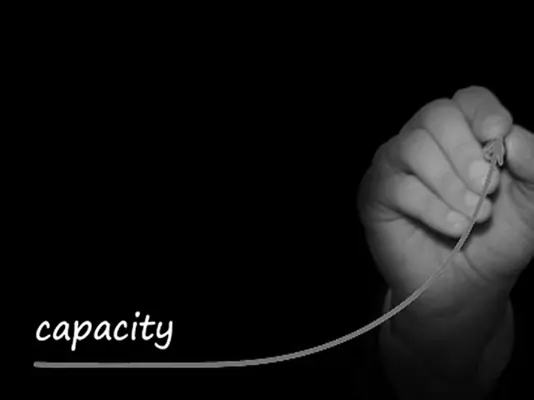The Equipment Enigma: Aligning NPD processes to deliver business growth
Suhas Kini

The demand for industrial equipment and machinery is growing worldwide. Global manufacturers are embracing new technologies like artificial intelligence, internet of things etc, to expand their bouquet of offerings to the customer. In India too, the manufacturing industry is growing, thanks to initiatives like ‘Make In India’. The Government of India has issued sops and created numerous special economic zones (SEZs) to encourage exports from the capital goods industry. These opportunities are drawing international equipment manufacturers from the automotive and defence sector to set up plants in the country.
However, despite these favourable conditions, the Indian industrial machinery manufacturing companies are struggling. Competing with international manufacturers, they have a tough time attracting business from domestic customers and are miles away from catching the eye of International customers. Let’s explore why the Indian equipment manufacturing companies are faring so poorly in capitalizing on the growth in this industry.
The missing edge
Two fundamental issues are of importance here.
- 1) Perception of low technology capability: Indian equipment manufacturers are believed to lack the expertise to build technologically high-end machinery; they are considered followers, not innovators, in this industry.But the fact is that Indian equipment manufacturers have been proving their technology capabilities. From time to time, they are known to create cutting edge equipment especially by collaborating with international firms. However, they have not been able to get the word out and commercialise these products.
- 2) Lack of complete range of products/price points/service: Additionally, unlike in earlier times when companies were comfortable buying different machines from different companies, the global trend is for manufacturing companies to prefer a single supplier for all their equipment; preferably with a service package. Unfortunately, equipment manufacturers in India, be it machine tools, material handling or ancillary equipment, still specialise in just one particular type of product. Moreover, when these machines are launched, they have only a limited range of features or options. This narrows the companies’ target customer base.
The vicious cycle in the R&D process
These two issues may appear unrelated, they aren’t. So, what do they have in common? The answer to this lies in understanding the vicious cycle set in motion when an environment of rampant multi-tasking (that traditional methods of managing projects creates) meet the necessity to meet deadlines of product expos/exhibitions.
Exuberant expo & sales
Expo/exhibition is the single largest platform for most new equipment launches. The objectives for participating in these expos are:
1) To familiarize customers with company’s offerings
2) To book orders from potential customers
The process of new product development is at its most frantic when it’s time for expos and exhibitions. During this time most manufacturers work long days and nights on their products so they can display them at the expos.
Forced compromises
In a rush to meet expo deadline, companies often
– Display products whose designs are not properly validated
– Exhibit only the base design of the equipment. This is primarily because creating a prototype is expensive. Eventually, these are sold in small volumes. So, companies cannot afford to make many different prototypes/pilot models and dump them later. They prefer that any machine made after the prototype stage would be with some assurance of sales in the form of confirmed orders. Secondly, even if the company is keen on showcasing multiple options and/or different price points at the expo (to get an edge over competition), R&D teams of these companies tend to be too stretched for time to manage it all before the expo deadline.
Pressure to increase new product launches
When price points are not competitive, and when the options are limited, the marketing teams find it tough to woo customers. Only a few machines are readily picked up at the expo. This poor strike rate exerts more pressure on the R&D team to launch a higher number of products in the next expo/exhibition. But the team plans to do so rarely have a smooth run.
Interruptions to R&D
After the expo, there is a lot of unsold or slow-moving equipment in stock. There is also the pressure to secure immediate sales. The sales team strives to push these products to customers accepting all forms of customisation requests.
This practice of securing sales based on customization (maybe a feature or a price point) along with the fact that the validation stage was compromised prior to the exhibition creates two major sources of interruptions to the planned activities of the R&D team.
For one, when the products that are not fully validated reach the customer premises, multiple shortfalls and complaints arise. This forces the company to channelize resources to address them. Further, the same team also has to design the promised customizations/options/provisions. These urgencies arrive with strong emphasis from the top management. They are attended to at the expense of on-going new product development tasks. This continues till the next expo launch deadlines approach and work on new products for the upcoming expo becomes high priority.
Expanding lead-time of R&D
When new projects are planned, interruptions are either not factored in or are considered minor issues. Plans are usually made with the assumption that teams would dedicate 100 per cent of their time for every project. In reality, however, that is not the case. Teams switch between projects. In this process of switching between ongoing and emergent tasks, the teams can barely give 50% of the time originally allotted to a particular project. Most of their time is used up by emergent tasks causing the lead time to expand.

The Integration equation
There is another detail that further complicates this cycle and creates more delays. In addition to switching between new projects and emergent tasks, teams also switch between the many new projects in the R&D bucket. And when teams switch between these projects, they may all choose different projects. For instance, part development team might “cherry-pick” a project which has the potential to generate substantial cost savings whereas testing team might choose one that can show a high utilisation of test rigs. As a result of this cherry-picking, progress of every project stalls in stages like integration/assembly for want of input from one of the many teams. This is called delay due to “De-synchronization”. At this juncture, as the teams wait for inputs, they switch again, and the problem only worsens. Almost every new product is delayed.

In this environment of chronic delays, when the next expo looms large on the horizon, manufacturers are forced to compromise on important aspects of New Product Development. They tend to do one or more of the following:
- 1. Make compromises in scope
- 2. Drop products midway
- 3. Postpone the development of products; in many cases these postponed projects do not see the light of day again.
- 4. Launch products with compromised validation
Under pressure, the company launches whatever designs they can in whatever state of completion that can be managed before the expo deadline. Thus, the cycle continues.

Fall-out on technology & innovation
Any new product or innovation calls for ample dedication of resources. But the above-mentioned problems are resource and time guzzlers. They consume the capacity of teams leaving them depleted of motivation and creativity. Eventually, innovation takes a backseat, and at best happens only in spurts. That is why Indian companies are not recognised as innovators or product leaders in the global arena.
The solution that isn’t
The problems laid out above are deep-rooted and are caught in a complex web of cause and effect. Companies tend to, superfluously, blame these chronic issues on quality or quantity of resources at their disposal. Consequently, the usual approach to tackle this is by adding or replacing resources. They soon discover that this does not change much. Ironically, post addition of extra resource, the problems could take a turn for the worse! Hence, the way forward is not toward augmenting resources but identifying how to manage the quantum of work involved effectively to experience a higher level of overall output.
The elements of the solution
Controlling WIP
General perception also dictates that in order to get more output, resources and teams have to work on a high number of projects. More the number of projects worked on, higher the output? Really?
This is true but only up to a point; the output eventually stabilises. This is because, in the initial days, the teams are not loaded to their fullest capacity. After a certain point, the output stagnates with the addition of more and more projects to the list. Adding more projects to this already heavy roster only jeopardises output/closure of projects. When the already stretched teams are forced to juggle multiple projects, they enter the bad multitasking zone; productivity and output begin to suffer. Most companies quickly reach this point. By loading the pipeline with more and more projects, the companies actually jeopardise the very output they seek.

How can companies move out of the red zone and into the green zone? How can they reduce switching and bad multitasking by teams?
The first step is to ensure that no further work/project is allowed into the system. But that, however, would not cut down existing Work in Progress (WIP). The only way to reduce WIP is to freeze work on a few projects. Strict application of the rule – absolutely no work on these projects – would help immensely (A word of caution: While reducing the active WIP, make sure that the system doesn’t enter the zone of starvation).
Improve synchronization
Slashing WIP improves output. It does not, however, cure de-synchronization. Teams would still continue to cherry-pick among the open projects in the system. To improve synchronisation, teams have to be directed to work towards a common project goal. This can be made possible by establishing a “Global priority” for all teams. Every project is given a token number. Teams pick projects as per the token numbers.
This “Global priority system” is common for all teams. This means that every team picks the same project when there is a choice to be made among many projects, thereby avoiding “cherry-picking” of projects. Care should be taken to ensure that this priority remains stable. Else, the system will soon deteriorate to its prior state of rampant switching and multi-tasking.
Gate control
The steps detailed above will free up team capacity. This will enable them to execute more projects, and most importantly, to perform the steps that were overlooked or skipped, especially simulation, product validation and process validation. Teams can also take time for development of options/additional provisions and also to undertake the pilot lot for the Equipment. This will ensure that the products, post launch, are ready to meet the needs of any customer. Most importantly, once the pilot lot is completed, the marketing teams become more confident of selling the product. This is because the company now has a Decisive Competitive Edge of providing the product readily to any customer who wants it (no waiting time).
It is important to make sure that the steps of validation/pilot are not skipped. For this, a strict mechanism of gate control at strategic points like Design, Manufacturing/Assembly and Launch is needed. This will ensure that the requisite steps for the particular stage are completed; subsequent stages can then be executed without interruption/rework.
The bottom line
The injections of WIP control, priority and gate control also need effective monitoring. Sustaining these processes and not falling for the temptation of violating the SOPs under pressure of time will determine their long-standing success. These injections will go a long way in increasing the productivity of R&D teams. What’s more, with the streamlining of work, the stress levels of employees come down, too.
So, if your workplace could be stress-free with much higher productivity, wouldn’t you welcome this change too?







